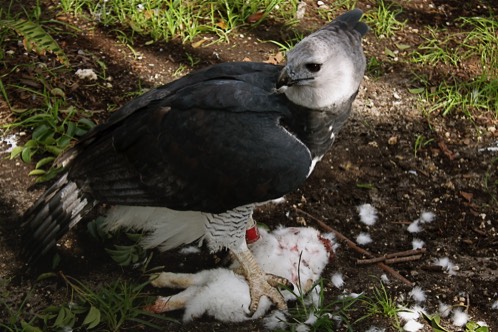
Rare throughout its range, the Harpy Eagle is found from Mexico (almost extinct), through Central America and into South America to as far south as Argentina. The eagle is most common in Brazil, where it is found across the entire national territory.[21] With the exception of some areas of Panama, the species is almost extinct in Central America, subsequent to the logging of much of the rainforest there.[22] The Harpy Eagle inhabits tropical lowland rainforests and may occur within such areas from the canopy to the emergent vegetation. They typically occur below an elevation of 900 m (3,000 ft) but have been recorded at elevations of up to 2,000 m (6,600 ft).[1] Within the rainforest, they hunt in the canopy or sometimes on the ground, and perch on emergent trees looking for prey. They do not generally occur in disturbed areas but will regularly visit semi-open forest/pasture mosaic, mainly in hunting forays.[23] Harpies, however, can be found flying over forest borders in a variety of habitats, such as cerrados, caatingas, buriti palm stands, cultivated fields and cities.[24] They have been found in areas wherehigh-grade forestry is practiced.
WIKIPEDIA